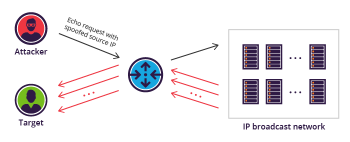Manage Linux File System on Ubuntu Linux Server
This article covers how to keep check and balance on your file system. Ext4 is the default file system on most Linux distributions for a reason. It's an improved version of the older Ext3 file system. It's not the most cutting-edge file system, but that's good: It means Ext4 is rock-solid and stable.
If you're setting up partitions on your main Linux boot drive, you'll also want to create a swap partition of at least a few GBs in size when setting up those partitions. This partition is used for "swap space". It's similar to the paging file on Windows. Linux swaps out memory to the swap space when its RAM is full. This partition must be formatted as "swap" instead of with a particular file system.
Install NetBeans on Linux Mint 20 - Step by Step Process ?
This article covers the Installation process of NetBeans IDE on a Linux Mint 20 system. In fact, NetBeans is an IDE (Integrated Development Environment) application mainly used by developers to create applications using Java and other programming architectures like PHP and C++.
Features of NetBeans IDE includes:
- A drag and drop GUI design tool for rapid UI development.
- A feature-rich code editor with code templates & refactoring tools.
- Integration tools such as GIT and mercurial.
- Support for the latest Java technologies.
- A rich set of community plugins.
Find DHCP Server IP Address in Linux Using CLI - Step by Step guide ?
This article covers the different ways of finding the IP address of your DHCP server in a Linux system. We have already dealth with how to install and configure DHCP server on Linux.
Linux System IP Scanning commands:
Scanning for IP address lets you have better control over your network. With a few commands, you can quickly map out the devices in your network and the IP addresses that they are using.
- ipconfig: This command displays all network settings assigned to one or all adapters in the computer. You can find information such as your own IP, subnet, and Gateway. For Linux and MacOS is "ifconfig".
- arp -a: When you issue the "arp -a", you’ll get IP-address-to-mac conversion and the allocation type (whether dynamic or static) of all devices in your network.
- Ping: It helps determine connectivity between two hosts and find the IP address of a hostname.
Install Rust on Linux System - Step by Step Process ?
This article covers the step by step Installation procedure of Rust on Linux. Now you can write rust programs on Linux. In fact, The Rust programming language, more commonly known as rust-lang, is a powerful general-purpose programming language.
Developed by Mozilla and designed by Graydon Hoare, Rust programming language is syntactically similar to C++.
We can verify from the terminal for the version of the Rust programming language installed on our system. To do so, we enter this in our terminal:
$ rustc --version
Install VidCutter on Linux Mint 20 - Step by Step Process ?
This article covers how to install VidCutter on a Linux Mint 20 machine. In fact, VidCutter is a cross-platform video cutting or trimmer software for Linux.
Features of VidCutter video editor:
- Open source Software.
- Cross-platform app available for Linux, Windows and MacOS.
- Supports most of the common video formats such as: AVI, MP4, MPEG 1/2, WMV, MP3, MOV, 3GP, FLV etc.
- Simple interface.
- Trims and merges the videos.
Limit the SSH Access with UFW on Linux Mint 20 - Best way to do it ?
This article covers how to define a new UFW rule for limiting SSH access on your Linux Mint 20 system. In fact, UFW, short for "uncomplicated firewall", is a frontend for the more complex iptables utility. It's designed to make managing a firewall as simple as setting ports to be open and closed, and regulating what traffic is allowed to go through.
How to install UFW on Ubuntu / Debian ?
UFW is installed by default in Ubuntu, but if it's not you can install it from apt:
$ sudo apt-get install ufwIf you're running another distro, you'll have to use that distro's package manager, but UFW is widely available. You can check the status of the firewall with:
$ sudo ufw status















